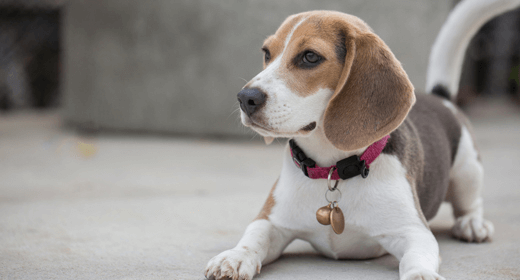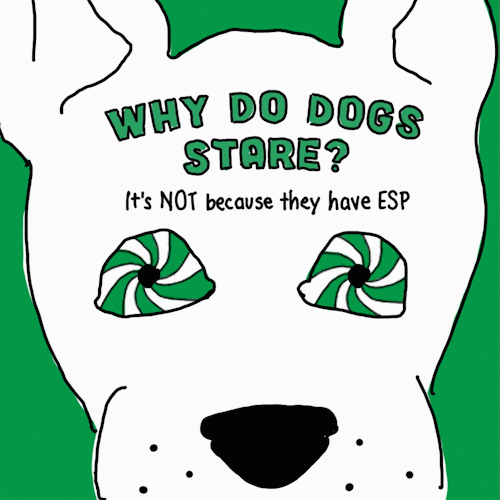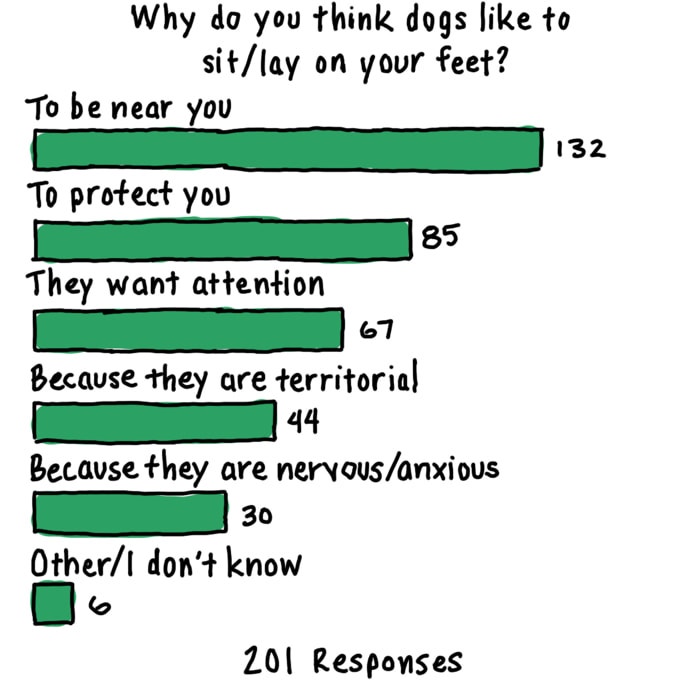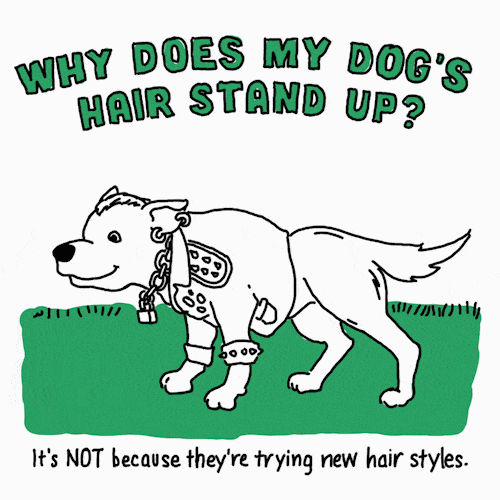

Dogs use a range of sounds to communicate with us and each other. Just as important is the body language they use to tell us how they feel or what they need. How well do you know your pooch’s unspoken cues? Read on to find out.
Dogs often stare at their owners because they love them. They want to make sure you’re okay or find clues for what you’ll do next — like making sure you’re not going for a car ride without them.
We love it when dogs do this, too, which has led to this trait being even more prominent.
Opens a new windowDr. James Serpell, BSc, PhD, Professor of Humane Ethics & Animal Welfare at University of Pennsylvania School of Veterinary Medicine, explains: “We've selected dogs for this behavior. Humans love that dogs look up at them in admiration, intense loyalty. One frequent observation researchers have made is that people who handle wild dogs ... they don't look their handlers in the eye like domesticated dogs do.”
Dogs have great hearing. High-frequency sounds that humans can’t hear are especially interesting to them. Head-tilting helps them track down the source. Owners find these head tilts super cute and often reward this behavior, which, of course, makes them do it more.
Dogs yawn when they’re tired, but it’s also a possible sign they’re stressed, impatient or frustrated — like when they’re in the vet’s office, or when you won’t throw that ball you’re holding already!
In a recent IAMS poll,* 90% of dog owners said their pet sits or lays on their feet and 100% of dogs said they love their owners. Dogs are very social creatures and this is a way for them to connect and be close to you. Plus, it keeps your feet warm.
Often called “raised hackles,” dogs do this when they’re nervous, threatened or showing aggression. It’s an adaptation from their wild days of attempting to make themselves look bigger.
Opens a new window Dr. Tammie King, Applied Behavior Technical Leader at Waltham Petcare Science Institute, offered this insight to keep in mind: “What’s important when talking about a dog’s body language is to not take one thing in isolation. You’re at risk of misinterpreting what the dog is trying to say to you. Context is everything.”
So be sure to pay attention to what your dog isn’t saying to keep them healthy and happy. Serving them
Opens a new windowIAMS dog food every day will certainly help.
*Surveyed U.S. dog owners, age 18+
Sample Size: n=201
Fielded May 8 to May 10, 2020





As a pet parent, it's hard to hear your furry friend crying. It can be due to separation anxiety, fear, or illness and can be frustrating to deal with. This article will provide practical tips on stopping your pup from crying and help them feel more comfortable and secure. We will guide you through establishing a routine and using calming aids to help your puppy stop crying and live a happier, more peaceful life.
Crying in puppies can vary depending on their age. Older puppies may cry because they are experiencing separation anxiety, are bored, or need to go outside. Meanwhile, newborn puppies cry because they are hungry, uncomfortable, or need warmth. Pay attention to why your puppy cries, so you can provide it with the right care and comfort.
If you are wondering why your pup is crying and how to put a stop to it, the key is to understand the underlying reasons. By gaining this knowledge, you can take the appropriate steps to address the problem and silence the crying. Keep reading to learn more about stopping your pup's tears.
As delicate and helpless beings, newborn puppies rely on their mothers or caregivers to provide for their basic needs. When hungry, cold, or sick, they often cry out in distress, it is like their tiny voice is seeking help. It can be heart-wrenching to hear their cries as they struggle to communicate their needs.
At this stage, the puppies must receive proper care and attention for survival. This may involve giving them warm, nutritious milk from their mothers or finding a suitable substitute if the mother cannot feed them. Providing the puppies with the necessary care will ensure their health and well-being.
In certain situations, puppies may need to receive medication or other forms of treatment to help them recover from an illness or infection. This can be a delicate and complex process, requiring close monitoring and expert knowledge to ensure that puppies receive the appropriate level of care.
As puppies grow older, they often become more vocal when they need to go outside to play or relieve themselves. This can manifest in whining or barking at the door and scratching at it with their paws to grab someone's attention. While this behaviour is natural for puppies, it can be frustrating for their caregivers, particularly when they are trying to get some rest or focus on work.
As a pet parent, providing enough exercise and mental stimulation is important to keep your puppy happy and engaged. If your older puppy is crying or whining, it could signify that they are bored and need entertainment. They may start pacing or circling the room, looking for something to do. If you notice your puppy exhibiting these behaviours, consider taking them for a walk or providing them with a fun new toy to play with.
As puppies grow older, they may become restless and cry when they are tired or ready for bed. This is typical behaviour among puppies, but it can be disruptive for the pet parent. To help your pup settle down for the night, try implementing a bedtime routine and providing a comfortable, cosy bed for it to sleep in. This will not only help your puppy feel more at ease but also allow you to get a good night's rest.
As a responsible pet parent, it's crucial to identify the reasons behind your puppy's crying and take appropriate steps. Whether it's hunger, fear, or loneliness, addressing these underlying causes can create a happier and more comfortable environment for your furry friend. By understanding the root causes of your puppy's crying, you can also provide your canine companion with necessary support and affection to help them feel loved and at ease. Here are some common reasons why puppies may cry:
Suppose your puppy is crying and showing other symptoms of illness. In that case, it could be due to several reasons, ranging from a respiratory infection to a more severe condition such as parvo or distemper. Keep an eye on your puppy's behaviour and pay attention to any changes that may indicate a health problem, so you can act quickly and prevent any potential complications. It is crucial to take your furry friend to the vet as soon as possible for a proper diagnosis and treatment, especially if the crying continues or is accompanied by other signs of discomfort or distress.
As puppies have small stomachs, they require more frequent meals than adult dogs. It's important to provide them with regular, balanced meals and snacks throughout the day to ensure their well-being and happiness. If your puppy is crying and has not eaten in a while, it may be asking for food.
If your puppy is crying, it may be because they feel lonely and neglected. To prevent this, spend quality time with your pup daily. Engage in activities like playing, training, and bonding with them to create a strong, positive relationship and prevent feelings of loneliness.
Puppies overflow with energy and require significant stimulation to stay content and healthy. If your furry friend is crying and appears restless or fidgety, it could be because they are bored and need something to do. Provide your puppy with various toys, games, and activities to keep them entertained and focused.
Suppose your puppy is crying and appears frightened. In that case, it may be because of loud noise, a scary situation, or even a sudden change in their environment. To help calm them down, try speaking softly, offering a treat, or playing soothing music. If the fear continues, seeking the assistance of a professional trainer or behaviourist may be necessary to help your puppy overcome its anxiety.
If your puppy is used to being around other dogs or people and is suddenly left alone for long periods of time, they may become lonely and cry. To prevent this, consider providing your puppy with a companion like another dog or a stuffed animal. Additionally, ensure your puppy has regular opportunities to socialise and interact with others to prevent loneliness and unhappiness.
Consoling a crying puppy can be a challenging and emotional task. Still, making your furry friend feel safe and loved is essential. Here are a few tips to help comfort a crying puppy:
To successfully comfort a crying puppy, it is crucial to have patience and an understanding of what may be causing distress. Once the source of the crying is determined, providing the appropriate support and can help stop its tears and give the puppy a feeling of safety. If needed, seeking advice from a professional can also be beneficial in these situations.